Online E-Learning System
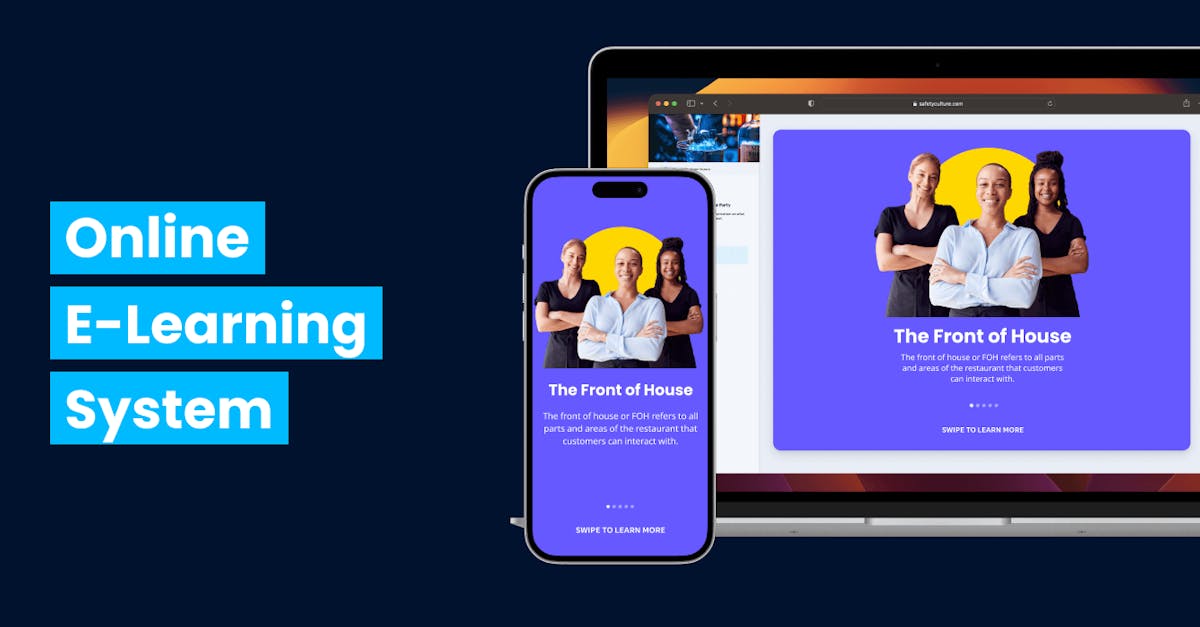
In today's fast-paced world, where convenience and flexibility are highly valued, online e-learning systems have emerged as the top choice for training and education. Throughout the years, these systems have been steadily gaining popularity as a method for teaching new knowledge and skills.
And with the continuous growth of technology, online learning has become more accessible, offering a wide range of benefits to learners of all backgrounds. Gone are the days when learners had to adhere to strict schedules or physically attend classes.
With online e-learning, individuals can access educational materials and engage in interactive learning experiences from the comfort of their own homes, at their own pace, and at a time that suits them best. In this article, we’ll take a deeper look at what electronic management learning systems are, their features and benefits, and how they have transformed learning.
What is an elearning system?
An electronic learning system means a cohesive online platform or software that gives teachers, managers, trainers, and learners alike a set of interactive features to help with the e learning management, delivery, and receipt of learning content. Because of its accessibility and versatility, this elearning system is highly compatible with the learning and training approaches of different work industries.
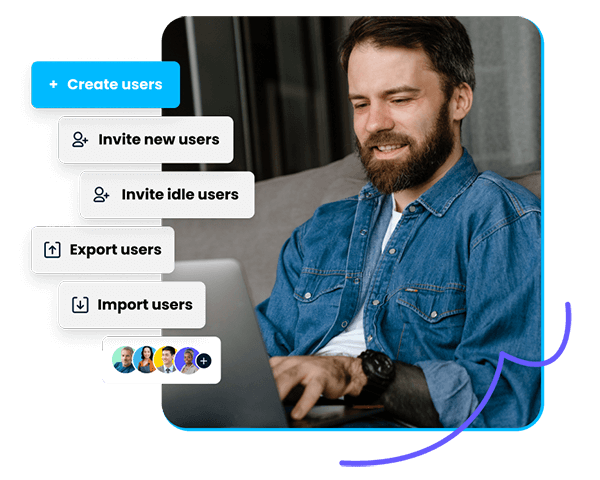
One example of an electronic learning system is an LMS or a learning management system. This refers to a platform that manages learning content such as courseware, training modules, and lessons. These elearning systems have been used mainly to manage and distribute pre-made content. Nowadays, a lot of these online learning systems feature authoring tools, analytics dashboards, and user controls for a more comprehensive learning process.
What should an elearning system do?
Primarily, an elearning system or LMS is designed to help teachers, instructors, trainers, and managers create, deliver, and measure the usage of learning materials in a more efficient way. It should make it simpler for them to keep track of learner progress and evaluate how well they’re meeting learning or training objectives. LMS features should also allow learning and development professionals to simplify processes such as knowledge management and learner discussions.
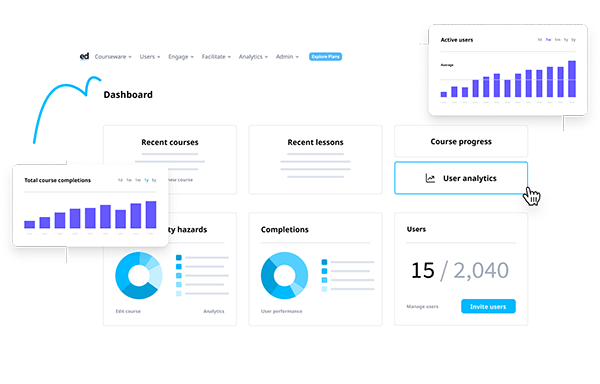
Managing online classes is easily tracked, measured, and reported through an LMS. Systems like EdApp have reporting and analytics features built-in to the online learning management system, making it incredibly easy for managers to track the performance of their learners. Once training outcomes have been analyzed, a variety of actions can be used to address knowledge gaps and re-engage targeted learners.
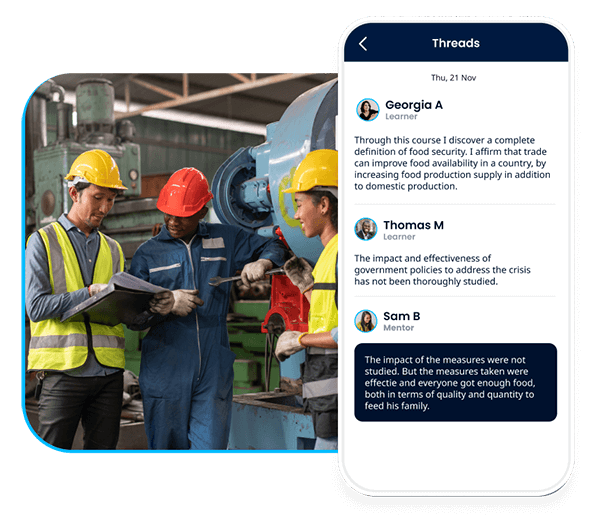
EdApp also has features like Discussions and Assignments, which users can use to participate in coaching and mentoring through conversations online. This helps make sure that learners are participating and applying their knowledge accordingly.
Start using the best all-in-one solution for your online elearning system. Sign up for free!
What are electronic management learning systems?
Electronic management learning systems are digital platforms designed to organize and deliver all sorts of online educational content and training programs. Picture them as a one-stop hub where learners can easily access their course materials, dive into interactive activities, and keep tabs on their progress.
Now, the main purpose of these e-learning management systems is to make learning a more engaging experience. They come packed with a bunch of cool features and functionalities like multimedia presentations, videos, quizzes, and assessments. It's all about creating an interactive learning environment.
These systems also make it super easy for learners to connect with fellow learners and instructors and collaborate through discussion forums, chat functions, and virtual classrooms.
Must-have features of a good elearning system
1. Microlearning
Microlearning is where you teach and learn using easy-to-remember, bite-sized chunks of information. Only some people can absorb a torrent of information in a single course or lesson, but breaking it down into smaller parts is clinically proven to make it absorbed more efficiently. This makes microlearning much more effective than traditional training.
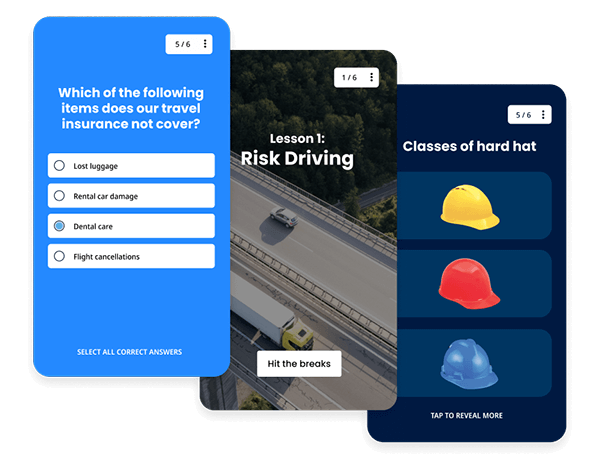
As an L&D professional, you should make sure that it’s a major part of any online learning system that you use for corporate training, retail training, or simply general learning of any kind.
2. Mobile-First Learning
Just about everybody in the developed world has a smartphone nowadays – especially those in a business environment. By allowing learners to use their own smartphones, they can perform lessons and training courses at their own convenience, wherever they are in the world!
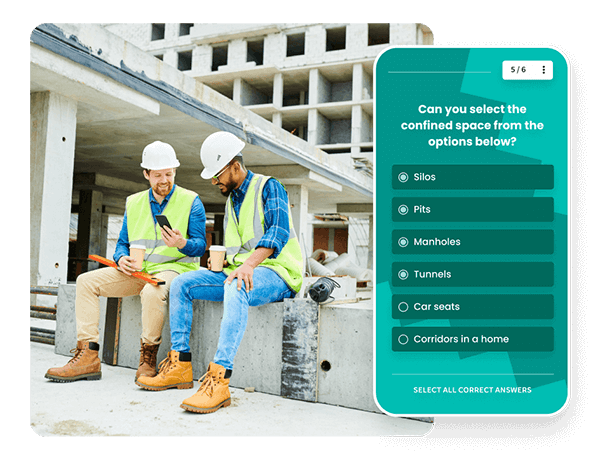
3. Cloud-Based
Few places in the world have a broadband infrastructure that allows an organization to send large courseware files to scores of individuals. Doing so would also mean that updating information and version control becomes very hard to manage.
However, if your electronic learning platform is based in the cloud, you can quickly and easily update courses or lessons whenever you want and all of your learners will instantly have access to the new information.
4. Electronic Learning System Templates
Despite the conveniences of eLearning, it’s still easy to get bogged down in answering myriad multiple-choice or true-or-false questions. Excellent educational platforms will have a variety of templates for you to choose from. That way you can have learners answering the same style of questions in completely different ways.

You could use scratch-to-reveal questions, word searches, swipe-right lessons, and more. This way you can add an element of each to microlessons and keep your learners engaged.
5. Gamification and Prizes
Even the best learners can become cynical and apathetic when it comes to doing the latest etraining. So why not add some incentives and a level of competition? A great electronic learning system will have the option to award points for correct answers and also be able to time answers.
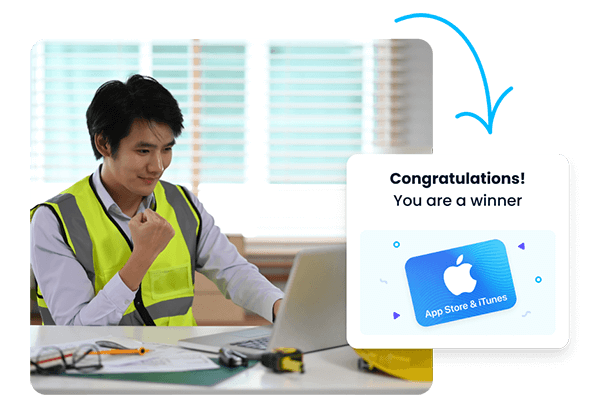
This way, you can offer prizes to the best performers. The level of competition makes learning almost subliminal and not the chore it’s frequently been regarded as.
6. e-Learning Authoring Tools
These allow you to quickly design course content even without coding or design expertise by using drag-and-drop and other user-friendly interfaces, making content creation easier for you and your team. Learning materials can then be distributed to your learners from an LMS.
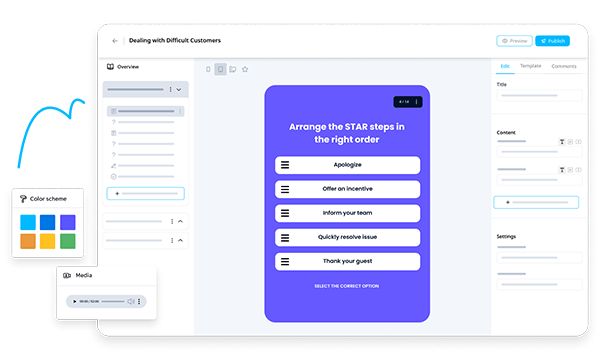
7. Real-Time Interactivity
With this feature, you can be sure that any updates you make to your training content will be reflected in real-time. It also means that any learner engagement can be tracked automatically so you’ll be able to get a clear picture of your learners’ current performance levels.
8. LMS Integrations
Perhaps your company or educational organization already has an electronic learning system. It’s working fine, but it has not kept up with the latest eLearning features and abilities. Rather than replace it, you can integrate your legacy online learning system with other platforms that offer the newer features you are looking for.
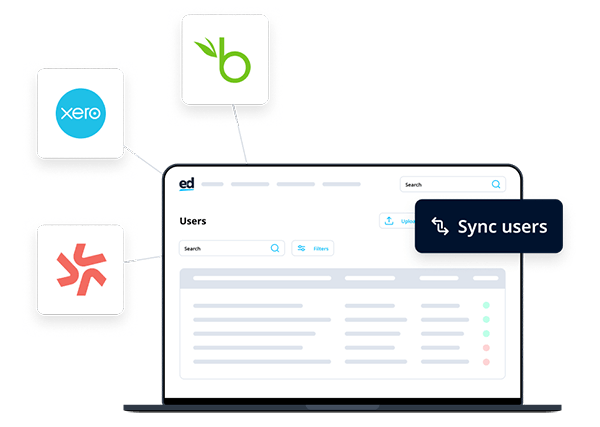
This means you don’t have to start from square one. Instead, you layer on the newer options which your integration offers.
9. Analytics and Reports
With analytics and reporting features, you’re able to see each learner’s unique course history. This will give you better insight into how learners are progressing in each course, their scores, and if there are any roadblocks in their learning pathways.

10. One or more Protocol-Compliant options
Content standards such as SCORM, Tin Can, API, IMS LTI, and AICC support you in making sure that your learning materials are compatible and interoperable with other learning platforms. As an L&D professional, it’s crucial for you to choose one that supports your training courses and is perfectly compatible with your LMS.
SCORM is one example of this.
What is SCORM compliant for LMS?
The acronym SCORM stands for Shareable Content Object Reference Model. SCORM is a set of technical, programming standards. Its purpose is to create compatibility between different eLearning platforms. In other words, SCORM standards guide programming code so that eLearning apps can “talk to” each other and work together.
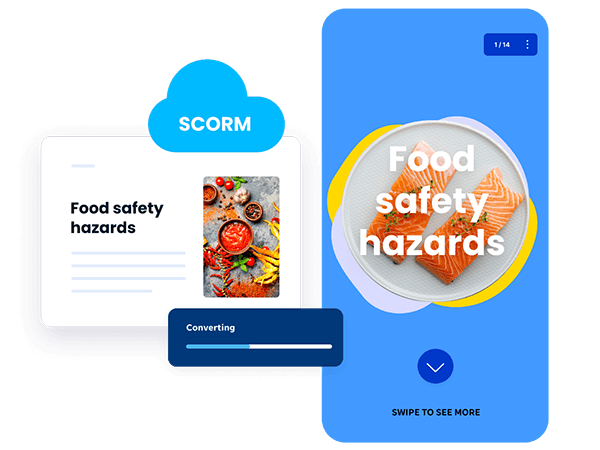
If an elearning system is SCORM-compliant, you know that it has been created according to current best practices of the industry and will be fully communicative with other SCORM-compliant software.
What are the benefits of using an elearning system?
5 benefits for corporate training:
- Improved ROI – You get more training for less money, a win-win for both the organization and the employee.
- Greater compliance more quickly – New employees are brought up to speed in less time. As compliance changes, existing employees learn new information to keep your organization’s compliance up-to-date.
- Proof of training – Independent reporting via your LMS shows that your organization is doing all training necessary.
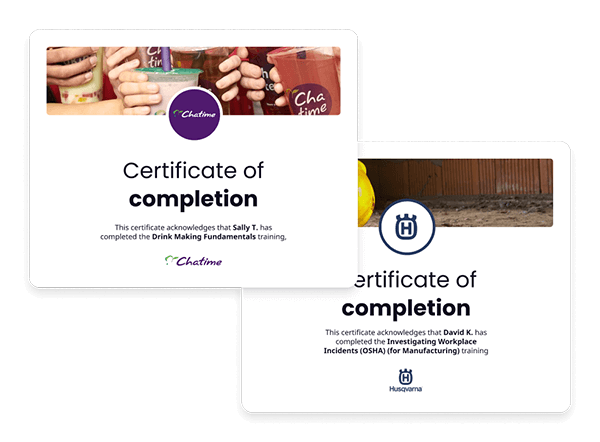
- High training level overall – Since your training is offered in an engaging, motivating way, and on an “any time, any place” basis, employees are encouraged to complete more of it. The more they do, the more they learn. The more they learn, the more your general training goals are reached.
- Need-based content – You build the training content you need. It is relevant, timely, and flexible. When things change, rapid authoring enables you to make the revisions quickly, sometimes within minutes. This means your training content can exactly suit your corporate needs.
5 benefits for educational organizations:
- Up-to-date content – Books can be out of date even before they are published. This means that by the time they reach your students, they are passé. Yet, you’ve spent a large part of your monetary resources on them, so they get used, even though they are not giving the best material. An elearning LMS with rapid authoring means you can change as needed, from one lesson to the next.

- Budget-friendly – By reducing the amount spent on books and paper, an online LMS can free up money to be spent on things you always wished your educational institution could afford.
- Re-allocation of time – Instructors spend a lot of time grading student work. Much of this work is in a closed-question format such as multiple-choice or matching. An LMS can grade such tasks automatically. This frees up instructor time to develop more creative course content.
- Pedagogical assessment – One of the main keys to successful learning is knowing what works and what doesn’t. The overall picture will help improve the effectiveness of the course. On a more specific level, the LMS analytics and reporting keep you aware of what your students are doing and how it is going. While students should be able to check their progress themselves, you can, too, get in touch with those who need extra support.
- Learning flexibility – LMS learning offers the ability for “any time, any place” education. Many of the “lectures” and tasks do not have to take place on a set day, at a certain time, or in a specific place. This accommodates a wider variety of learning styles than the traditional classroom setting.
How to get started with an online e-learning system
Of course, it's best to find a platform that fits your organization's needs. Explore the features and functionality of each system and see if it integrates well with the applications and tools you already use. That's why SCORM compliance exists. It's best to try tools out for free to discover if the app itself works for you. Here are some things to look out for:
- A comprehensive course library
- An intuitive course creator tool
- Full 24/7 customer support
- In-app integrations with existing tools like Canva
- Complete reporting and analytics
If you're interested in a powerful, yet simple online e-learning system, get started with EdApp today. It's free forever!
Curated course examples
Author
Hannah Malmstrom
Hannah is an eLearning writer who dedicates her time to creating in-depth content about EdApp, a multi-award-winning mobile LMS that has pioneered one of the most progressive microlearning solutions on the market. She brings years of writing experience in the online software industry to her current role in the eLearning sphere. When she's not writing, you can find her catching up on new anime series or re-reading her favorite novels.
